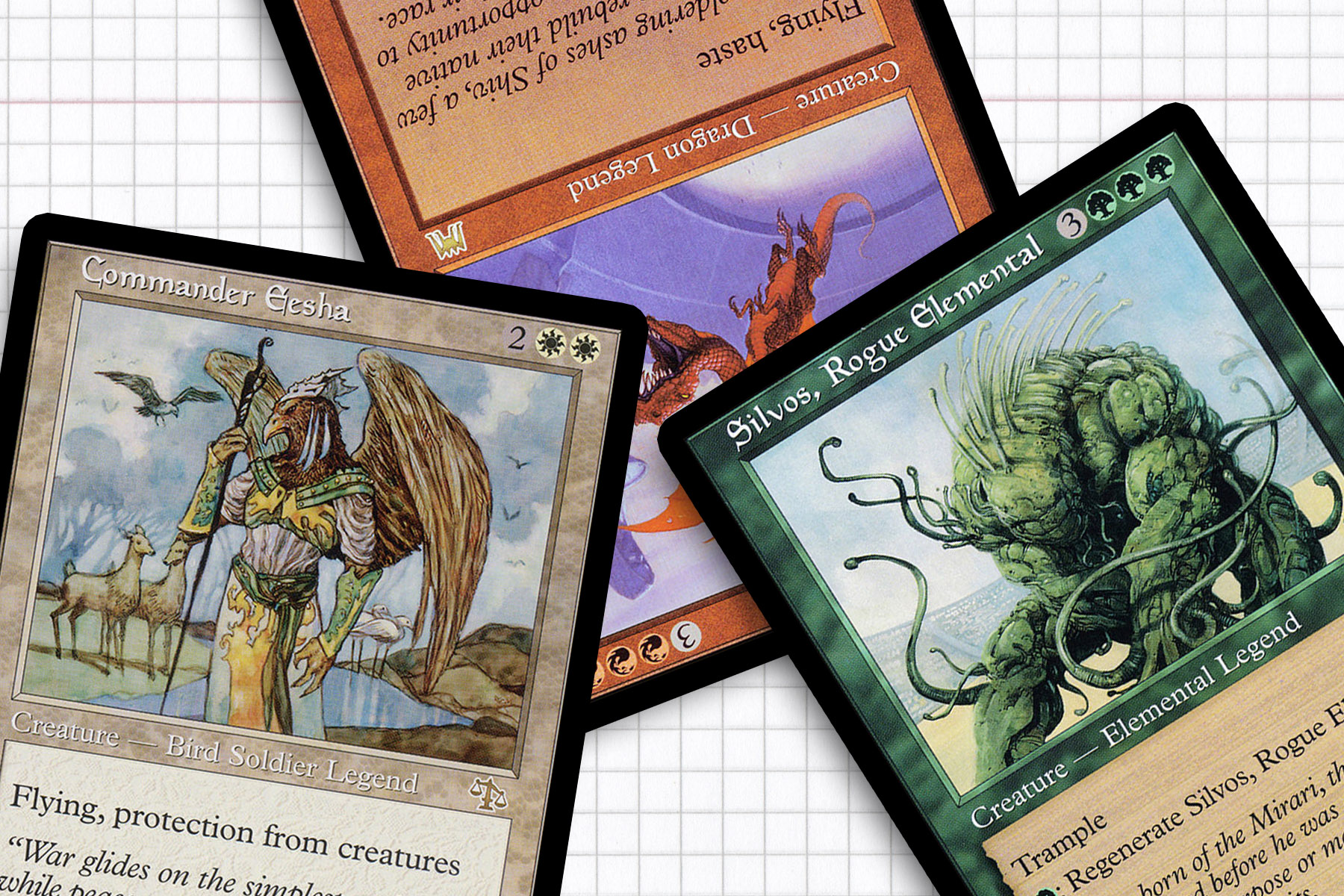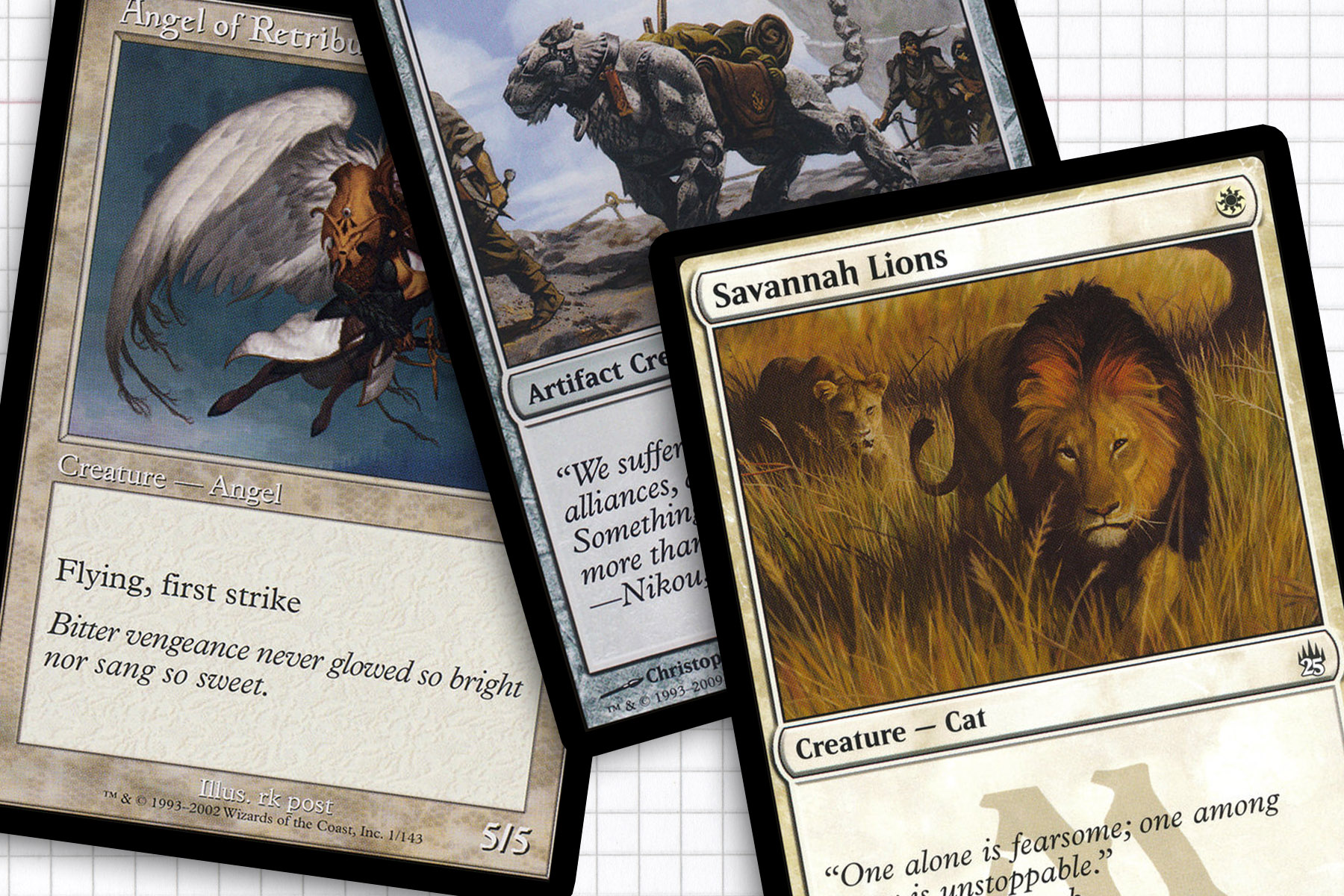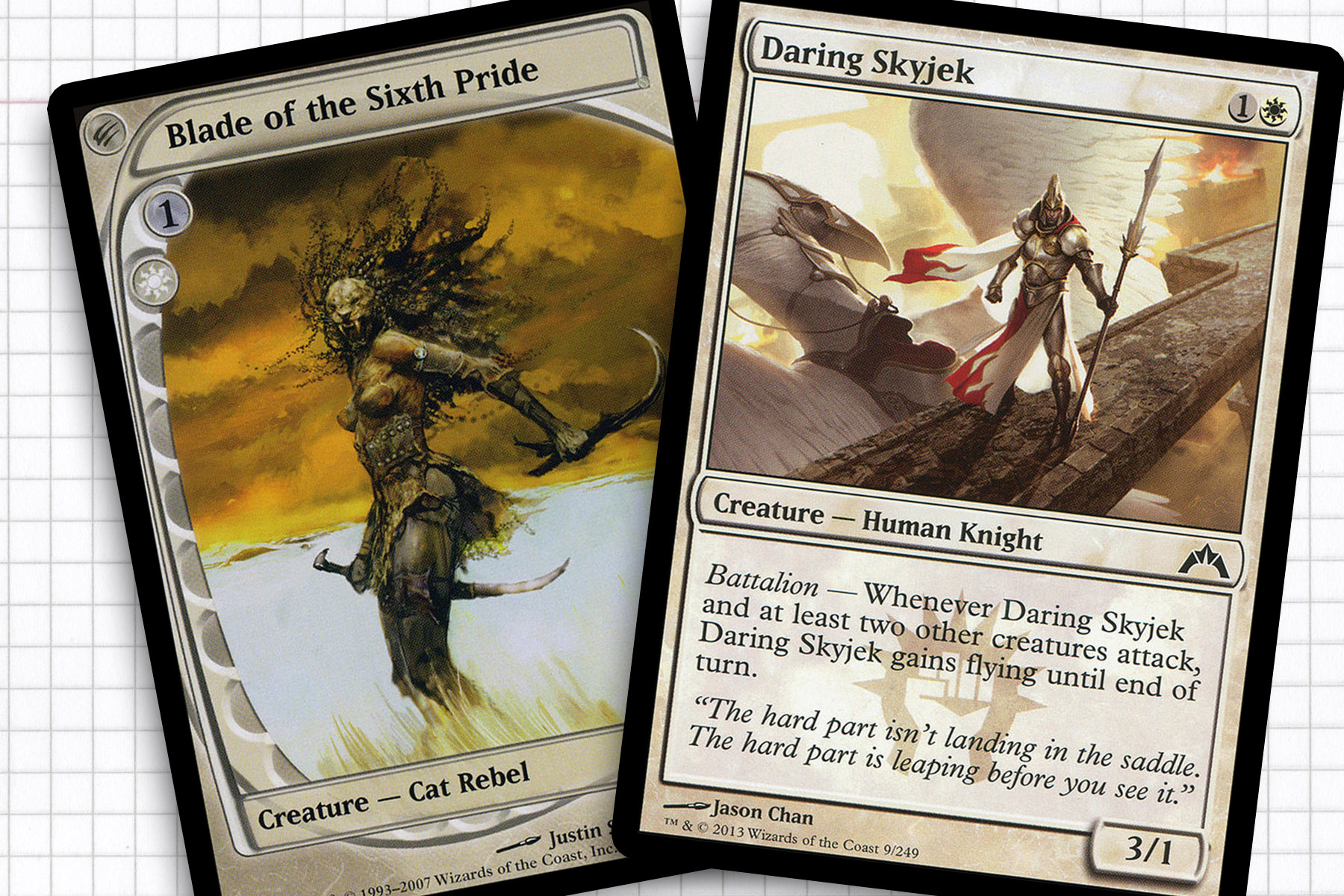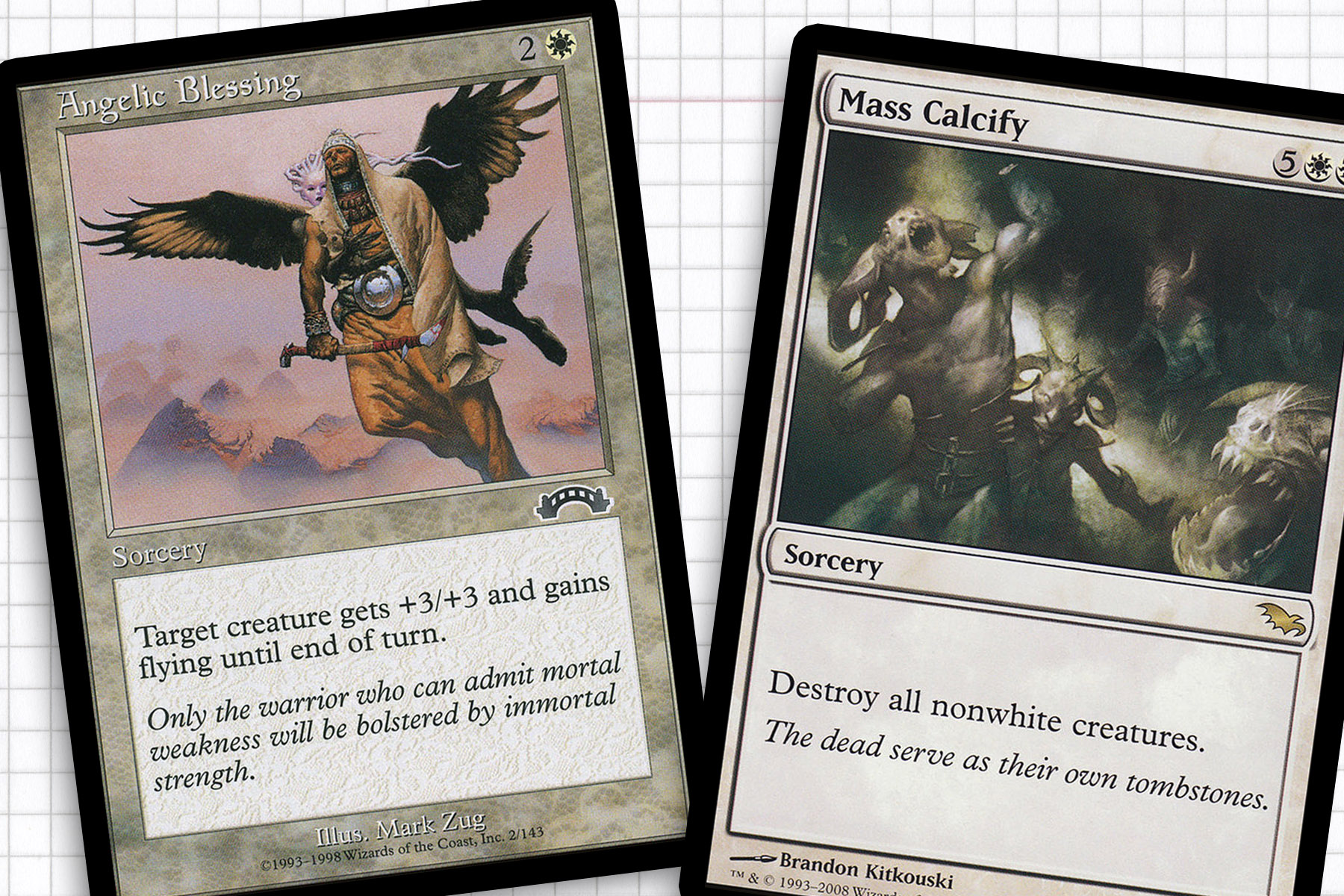Fatherhood has been kicking my butt lately, especially distracting me from less important things, while leaving me an empty husk at the end of the day. I was able to enjoy some of the Top 8 of Pro Tour Dominaria this past weekend, but I mainly kept up via the Hipsters of the Coast twitter feed and reactions from people discussing where Standard is right now. I will admit that Red seems like it’s been the color to play for much longer than I was aware upon looking back at past Pro Tours.
To say that being a parent is easy is a bit of a lie, at least it has been based on my experiences. I would never go back, but it is certainly the kind of thing that tests you day in and day out. One thing I immensely enjoy is watching my son discover the world in ways I have become too complacent to truly appreciate. As this is a Magic column, this week I wanted to explore my thoughts for how my son might discover Magic and what I would want to do to foster it. I thought about writing this article a lot in the past few months, after the question of how to teach a new player came up during the Great Designer Search 3. But what would my plan really be?
This is probably going to prove to be nothing more than a hopeful fanfic of my own future, as odds are my son will have no interest in Magic, even if I keep it shrouded in mystery and intrigue. More to the point, this week I want to explore what kind of a deck I would introduce Commander to my son with, keeping in mind that he will be approximately five to seven years old and can do basic math—in our current world, a complete fantasy. Taking my son as the subject, the right angle to address the issue was clearly through a mono-colored deck, probably with a low cost general so that he can see it in action almost right away. This week we’re going vanilla with Isamaru, Hound of Konda.

Singling Out a Format
“Ryan, why are you introducing your child to Commander as their first Magic format?” I hear you asking.
In truth, I think the perfect format might really be a mutation of Brawl—sixty card singleton with a general, all Standard legal for the time travelers reading this article in the future—not restricted by another format’s framework. But I do want a format, something that can be built around and recognized by other players. In any fashion, singleton is my method of choice, because I think it mimics the way most people enter the game: a relatively small pool of cards, rarely any meaningful duplicates, and a hunger to just play the game. When I first started playing Magic we often played 75 card decks, got to drop all the lands in our opening hand, and drew back up to seven on our draw step. It was madness.
In my mind, teaching Magic is like teaching reading: once you have the aptitude, you can do whatever you want. It isn’t much of a stretch to say that getting the cards in your hands and learning a version of the rules is the important part. From there a player with enough curiosity can discover other ways to play the game as they dive deeper. That doesn’t mean I get off free from delivering the building blocks of Magic, though. This deck will be aimed at teaching Magic to a new player in a fashion I think could work with the right “mentor” helping to foster the learning experience. I will be taking some notes from Portal expansions and the articles from across the internet about the basics of the game to attempt to outline the best way I see fit to get a player enfranchised into the game.

French Vanilla
Isumaru has the distinction of being the game’s first vanilla legendary creature, something only done once more in the 25 year history of the game; but since Yargle, Glutton of Urborg is nightmare fuel, I will not be featuring them anymore this week. Isumaru decks are pretty standard fare for Commander, mono white Voltron with an aim to defeat opponents in as few of turns as possible. I have never been pushed to build the deck in paper, but I absolutely see the appeal. As the head of the deck, I see him setting the tone for the rest of the 99, mostly basic lands, Geier Reach Sanitarium, and virtual vanilla creatures to keep everything easy to follow. I wouldn’t stray too far away from evergreen abilities and very selectively dip my toe into more complex keywords with things like battlecry or battalion.
While I see this deck being comprised of a lot of the building blocks of Magic, I want it to be creature heavy, because I believe that creatures are just about the easiest part of the game to understand.They have some lenticular qualities that add depth as you begin to understand creature combat, like chump blocking and double blocking through repeated game play. But they are straightfoward to new players as well.
My first inclination was to include only white mana symbols in the cost of all the spells within, but I soon realized that that would only create more confusion if I didn’t help a new player to understand that generic mana appears in both the cost of spells and also the rules text of cards. Fighting that learning instinct might be the heart of the issue. This article took longer to write than it should have, because for some reason I convinced myself early on that a new player was going to have some kind of handicap for understanding the game that I didn’t have when I started. I was never tripped up by the use of generic and colored mana symbols, or what power and toughness meant, or what each kind of spell did.
Wizards is very open about the fact that they include vanilla and french vanilla creatures in every expansion because, especially in Limited, when you are faced with a bunch of stuff that you were not entirely familiar with, it’s always nice to just let your brain rest for a second when you top deck a vanilla creature. I contend that in Commander we are actually very used to playing with vanilla creatures, it’s just that when they come into play they also deal 5 damage divided as we please, or destroy all artifacts, or even tutor a card from our library. For the most part we don’t all thrive on complicated board states, and I can’t imagine a new player would want to dive too far into the game if they felt the overwhelming complexity every time they drew a card.

Blade of the Sixth Pride
I have a soft spot for Blade of the Sixth Pride. This humble 3/1 doesn’t seem all that important, but I think it stands as a mold for the modern White two-drop. The story behind how we got Blade of the Sixth Pride—or at least my understanding from listening Mark Rosewater on “Drive to Work”—comes from a desire to do something special with the futureshifted frames in Future Sight. Mark’s goal was to make vanilla creatures eye-catching, and at some point the idea to make them full art took shape. From that we got a common full art vanilla creature in each color, the others being Blind Phantasm, Mass of Ghouls, Fomori Nomad, and Nessian Courser.
But in Blade of the Sixth Pride we got the first 3/1 for two in white and second in the game’s history. That distinction, coupled with the fact that it was a common, set a new standard for what the archetype of White Weenie could look like. This mold has been revisited 19 more times giving us cards like Accorder Paladin, Daring Skyjek, and Raptor Companion, most of which I think have a good place in the deck, even if some fall more on the side of virtual vanilla. The intention with these creatures is to highlight the more aggressive nature of white I want to magnify in this deck, attacking over pillow-forting up. While not immediately apparent to a new player, the ability to summon a creature that can create a higher-than-normal amount of damage at such an efficient mana cost becomes characteristic of the color. When they die very easily later, it only strengthens the lessons that these creatures are meant to be striking while the iron is hot.

Teaching Spell Mastery
Big haymaker spells are exciting, especially for new players. I would also follow the Portal method, including only sorceries over instants with a new player’s first deck and including a card like Day of Judgment over Wrath of God to work around the explanation of regeneration for the time being. But I do think that enchantments and artifacts are a cool part of the game that in limited amounts—say ten in the sixty nonland cards—should not add too much to board complexity. Think Glorious Anthem, Temple Bell, and Knighthood.
I don’t know where exactly I might fall with auras and equipment. They were the kinds of things that were very exciting as a new player, but I will also admit were something that didn’t always get played correctly as my neighbor and I were first investigating game in late 2002. Auras are the tightrope. They feel really exciting, but also really demoralizing when you start to realize how removal spells become blowouts. I think trying to find the fun and including something like Holy Strength or Spirit Mantle, and later Empyrial Armor, can make for jaw-dropping moments.
The last bit is also important to keep in mind: leave room for the deck to level up and become something more powerful over time. Obviously there is the problem of attachment and the security of knowing how X or Y card already works; but if the game hooks someone, the promise of more splashy spells should excite them as well. This goes back to my thoughts on going beyond the evergreen with creatures, even in a limited capacity. Complexity is a dangerous thing to flirt with, but it’s also the kind of thing that can make games interesting. When you hold Aven Cloudchaser until there is an enchantment to destroy, only to learn later that you would have won with just the 2/2 flier being cast on turn four. Or that Glorious Anthem is good, but in the right deck Honor of the Pure is better. I think that is an important thing to keep in mind, allow your student—for me, my son—to have room to learn and level up on their own.
Teaching a new player Magic comes with a very complicated to-do list. I know that even if I gave myself three months to write this article, I would never exactly hit all the points I needed to make this game both approachable and appealing. The magic of Magic is really in the cards. It’s in the classic fantasy, and the familiar but new feeling of a lot of the worlds the game visits.
I was hooked on Magic the first time I played it. I can imagine that if I keep my head on my shoulders I can probably pass that love onto anyone with interest in fantasy, sci-fi, or games. How would you teach someone Magic? Would you just give your student a deck and walk them through a game turn-by-turn, or would you let them discover the game at their own pace? Is Arena the answer? Was Duels of the Planeswalker the right way to go? Feedback is always appreciated. Thanks all.

